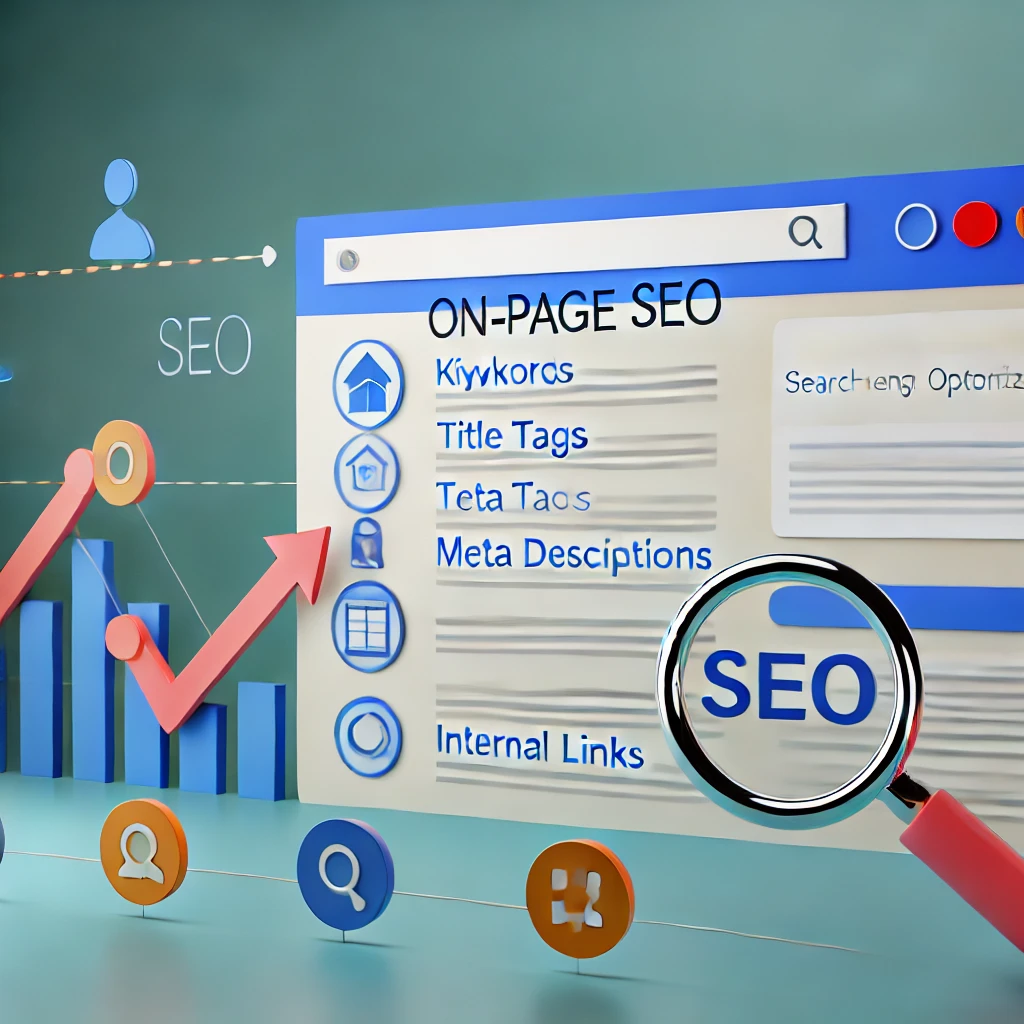On-page SEO is one of the most effective ways to boost your website’s visibility and attract more organic traffic. It involves optimizing individual web pages to rank higher and earn more relevant traffic in search engines like Google. In this guide, we’ll explore the key elements of on-page SEO and how you can improve your site’s rankings by following these best practices.
1. Conduct Keyword Research
The foundation of any successful on-page SEO strategy starts with thorough keyword research. Identifying the right keywords helps you understand what your target audience is searching for. These keywords should be incorporated naturally into your content to increase relevance and help search engines understand the topic of your page.
Tips for Effective Keyword Research:
- Use tools like Google Keyword Planner, SEMrush, or Ahrefs to find relevant keywords with good search volume and low competition.
- Focus on long-tail keywords, which are more specific and often easier to rank for.
- Analyze your competitors’ content to see which keywords they’re ranking for and where you can gain an advantage.
2. Optimize Title Tags and Meta Descriptions
Your title tag and meta description are the first things users see when your page appears in search results. A well-optimized title tag can significantly improve your click-through rate (CTR), while a compelling meta description encourages users to click on your link.
Best Practices:
- Title tags should be concise (50-60 characters) and include your target keyword as close to the beginning as possible.
- Meta descriptions should be between 150-160 characters, summarizing the content and including a call-to-action (CTA) to entice users to click.
3. Use Header Tags (H1, H2, H3)
Header tags help break up your content into manageable sections, making it easier for users to read and for search engines to understand the structure of your page. Search engines give priority to content in header tags, so it’s important to include your main keyword in the H1 tag and related keywords in H2 and H3 tags.
Tips for Headers:
- Use only one H1 tag per page, and make sure it accurately describes the main topic.
- Use H2 and H3 tags to organize subtopics and improve readability.
- Ensure each section provides valuable information that addresses users’ search intent.
4. Optimize Images and Alt Text
Images are a key element of user engagement, but they can also contribute to your on-page SEO. Properly optimized images can help your page load faster and improve rankings in image search results.
Steps to Optimize Images:
- Compress images to reduce file size without sacrificing quality, which improves page load speed.
- Use descriptive file names that include relevant keywords.
- Add alt text to every image, which helps search engines understand the content and improves accessibility for users with screen readers.
5. Create High-Quality Content
Content is at the heart of any on-page SEO strategy. Search engines prioritize pages that offer valuable, relevant content that satisfies user intent. High-quality content not only improves your search rankings but also enhances user engagement and encourages visitors to spend more time on your site.
Content Creation Tips:
- Ensure your content is informative, original, and solves a problem for your audience.
- Use your target keyword naturally throughout the content without keyword stuffing.
- Include related keywords and synonyms to cover the topic comprehensively.
6. Improve Internal Linking
Internal links guide users to other relevant pages on your website, helping to reduce bounce rates and improve page authority. They also make it easier for search engines to crawl your website and understand its structure.
How to Optimize Internal Links:
- Link to important pages that you want to rank higher in search results.
- Use descriptive anchor text that includes relevant keywords.
- Avoid excessive linking—only link when it adds value to the user.
7. Optimize Page Load Speed
Page speed is a critical ranking factor for both user experience and SEO. Slow-loading pages frustrate users and lead to higher bounce rates. Search engines reward websites that load quickly, so it’s essential to optimize your site’s speed.
Ways to Improve Page Speed:
- Compress large files, including images, CSS, and JavaScript.
- Use browser caching to speed up the return visits.
- Consider using a content delivery network (CDN) to reduce latency for global users.
8. Make Your Website Mobile-Friendly
With more people using mobile devices to browse the internet, it’s essential that your website is mobile-friendly. Google uses mobile-first indexing, which means it primarily uses the mobile version of a site for ranking and indexing.
Mobile Optimization Tips:
- Use responsive web design to ensure your site works well on all devices.
- Avoid using flash, pop-ups, or other elements that may not work properly on mobile.
- Ensure that your content is easy to read, with appropriately sized fonts and buttons.
Final Thoughts
On-page SEO plays a crucial role in driving organic traffic and improving your search rankings. By focusing on the key elements like keyword optimization, title tags, content quality, and page speed, you can enhance your website’s performance in search engines and provide a better experience for your users. Implement these strategies today to start seeing improvements in your rankings and visibility.



0 Comments